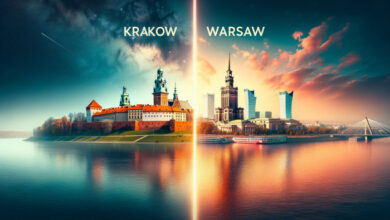Auschwitz, a complex of Nazi concentration camps and extermination centres in occupied Poland during World War II, is a haunting place that has left an indelible mark on history. As you plan your visit to this sombre site, it’s crucial to understand the significance of Auschwitz and what to expect during your visit.
The complex consists of three main camps: Auschwitz I, Auschwitz II-Birkenau, and Auschwitz III-Monowitz. With over a million people, mostly Jews, being systemically murdered here, it now stands as a chilling reminder of the Holocaust.
During your visit to Auschwitz, you will experience various emotions as you learn about the harrowing events that occurred on these grounds. When visiting Auschwitz I, you will find the former concentration camp and administrative centre for the entire complex. It houses exhibitions and displays about the camp’s history and the plight of its victims.
It is essential to wear comfortable shoes and prepare for an intense, full-day experience as the guided tour of Auschwitz I generally takes around two hours.
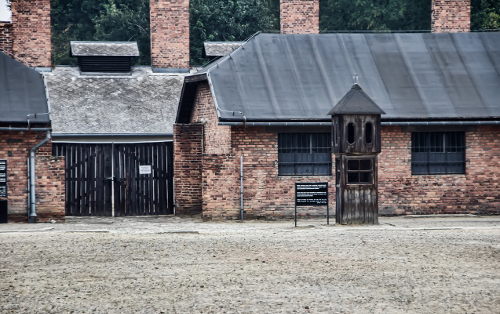
Further into the complex, you will explore Auschwitz II-Birkenau, the largest extermination centre, where the majority of victims met their tragic end in gas chambers. As you walk around this expansive site, it’s impossible not to feel the weight of history bearing down. To fully grasp the atrocities that took place in both camps, allocate approximately 90 minutes for each site.
Auschwitz is a sombre, yet necessary reminder of humanity’s dark past and serves as a testament to those who perished in this horrifying genocide.
Table of Contents:
Visiting Auschwitz
When planning your visit to Auschwitz, you should prepare for a sombre and emotional experience, as it stands as a testament to the horrors of the Holocaust.
Located near the town of Oświęcim in Southern Poland, Auschwitz is not far from Krakow and can be easily reached as part of a day trip.
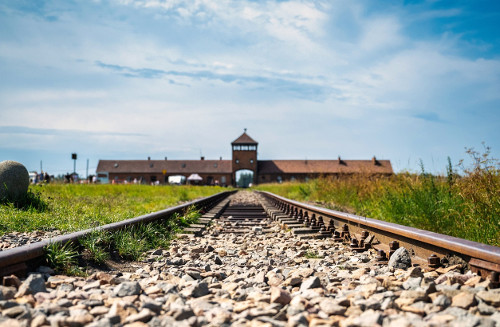
Krakow is a vital starting point for your Auschwitz visit; there are several options available for transportation, from trains to buses to Auschwitz shuttle services. Alternatively, you can also book an Auschwitz tour from Krakow or sign up for one of the many Auschwitz tour packages.
Admission to the grounds of the Auschwitz-Birkenau Memorial is free of charge. However, it is highly recommended to reserve entry cards beforehand on visit.auschwitz.org and consider visiting with a guide-educator to better understand the history of the site.
Fees are charged for engaging a guide-educator, and they should be reserved at least two months before your planned visit.
Auschwitz is made up of three parts: Auschwitz I, Auschwitz II-Birkenau, and Auschwitz III-Monowitz. During your visit, you will witness remnants of gas chambers, crematoria, and the vast expanse of barracks, reminding visitors of the unimaginable suffering that took place here.
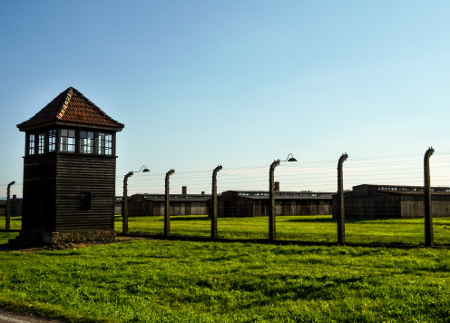
As you explore Auschwitz, it is essential to remain respectful of the site, as it serves as a memorial and final resting place for millions who lost their lives. Please avoid loud conversations, laughing, or taking selfies at the site; instead, immerse yourself in the solemn and powerful atmosphere it emanates.
In conclusion, visiting Auschwitz is an unforgettable experience, providing insight into the darkest chapters of human history. By adequately preparing for your trip and behaving respectfully during your visit to this solemn place, you will gain a deeper understanding of the Holocaust’s atrocities and pay homage to the millions of lives lost.
Etiquette and Rules
When visiting Auschwitz, it is crucial to maintain a respectful and solemn attitude throughout your time there. As a significant historical site that witnessed immense suffering, it requires visitors to adhere to certain rules and guidelines in order to honour the memory of those who perished.
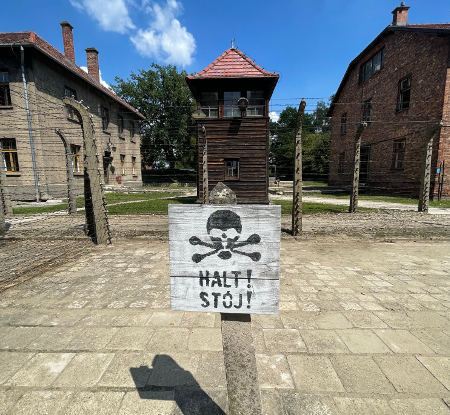
When considering your attire for the visit, make sure to dress in a way that shows respect for the site and its history. Learn more about the appropriate Auschwitz Dress Code before your visit. It is advised to dress modestly and avoid clothing with offensive or inappropriate images or text.

Additionally, the weather in the area can be extreme, so you should wear weather-appropriate clothing to ensure your comfort during the visit.
As you explore the site, please remain quiet and composed out of respect for the victims and the solemnity of the location. Visitors are asked to follow the directions of museum staff and guide-educators, as well as obeying all posted signs and notices. Certain areas of the site may not be open to the public – please stay within marked limits and avoid trespassing or taking shortcuts.
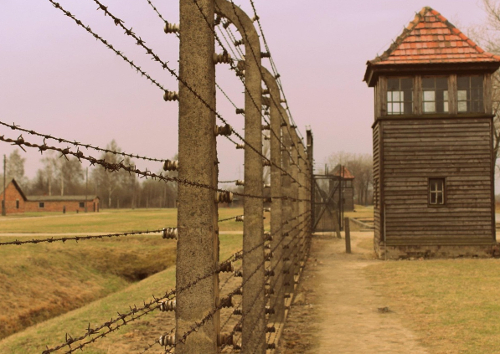
Photography is generally allowed at Auschwitz, but there are specific rules regarding its use. Flash photography and tripods are strictly prohibited, as are photographs capturing images of victims or human remains. In some areas of the site, photography is not allowed at all, so please adhere to these restrictions.
Lastly, it’s essential to be aware of the things you should not do during your visit. Familiarise yourself with the What not to do at Auschwitz rules in order to ensure a respectful experience. For example, avoid eating, drinking, or smoking within the museum grounds, and refrain from touching or climbing on any monuments or structures.
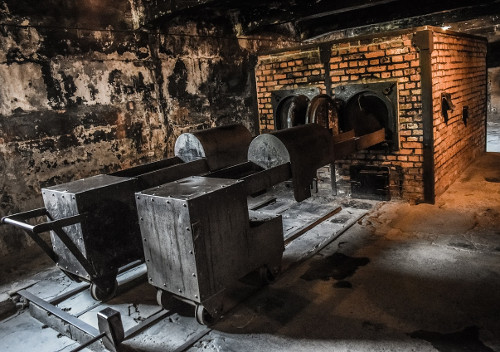
By following these etiquette guidelines and rules, you will help preserve the dignity and solemnity of Auschwitz, and ensure a meaningful experience for both yourself and fellow visitors.
Auschwitz Tour Experience
During your visit to Auschwitz, you can expect a profound and solemn experience while learning about the Holocaust and the atrocities committed at the concentration camps. There are two main sites included in the tour: Auschwitz I and Auschwitz II-Birkenau.
At Auschwitz I, the former Polish barrack, which was used initially to house Polish prisoners, you will witness the original concentration camp. As you walk through the site, the knowledgeable guide will provide you with historical context and stories to help you better understand the horrors that took place there. Exhibits consist of personal items of the prisoners, photographs, and informative displays.
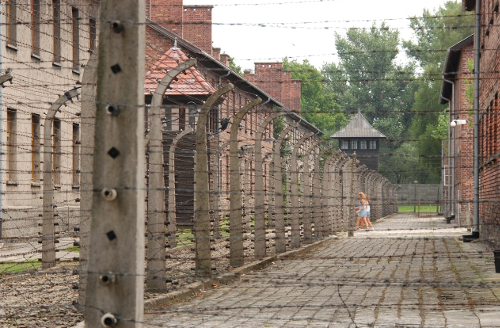
As part of the tour, you will also visit the more extensive and notorious Auschwitz II-Birkenau. This site served as both a concentration and extermination camp during World War II.
You will see numerous barracks, gas chambers, and crematorium ruins – all tangible reminders of the suffering and death that occurred in this complex.
The historical narration will continue to provide you with insights, making the experience both educational and emotional.
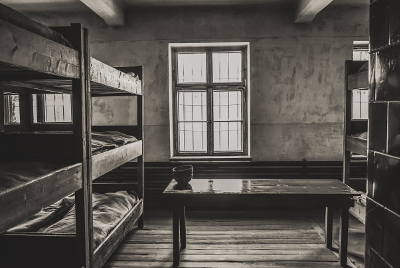
Visiting Auschwitz in groups can be an option, as many guided tours from Krakow cater to different group sizes. Group tours can be beneficial in sharing the emotional impact with others and providing opportunities to discuss the experience as you learn together.
For a more focused and individual approach, you can also choose to visit on your own, exploring at your own pace and absorbing the site’s atmosphere in a more personal way.
Throughout the tour, remember to be respectful of the history and tragedy that occurred at both Auschwitz sites. The experience can be overwhelming, and it’s crucial to be mindful of the place’s significance and the memory of those who suffered there.
Your visit to Auschwitz will undoubtedly be an unforgettable experience that will stay with you, opening your eyes to the histories and atrocities committed in the camps during the Holocaust.
Auschwitz Museum
When you visit the Auschwitz Museum, be prepared for an incredibly moving and educational experience. The museum is located at the former Auschwitz I site and divided into various exhibitions that document the atrocities committed during the Holocaust. It takes a minimum of 90 minutes to explore each site, Auschwitz I and Auschwitz II-Birkenau.
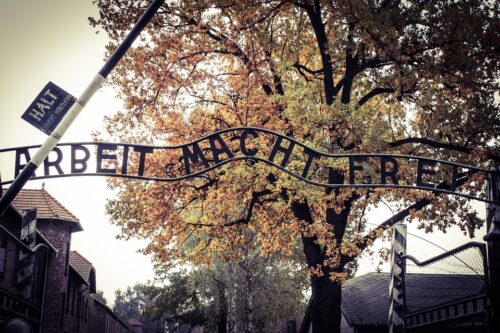
As you enter the museum, you’ll pass through the infamous gate bearing the inscription, “Arbeit Macht Frei” meaning “Work Sets You Free.” This deceptive message was intended to give prisoners false hope, and walking through the gate is a chilling reminder of the countless lives lost at this concentration and extermination camp.
One of the most harrowing exhibitions is the Auschwitz room of hair, where you can see the shorn hair of prisoners. This display highlights the dehumanising process new arrivals underwent, having their entire body hair cut and shaved during the admission procedure for so-called hygienic reasons.
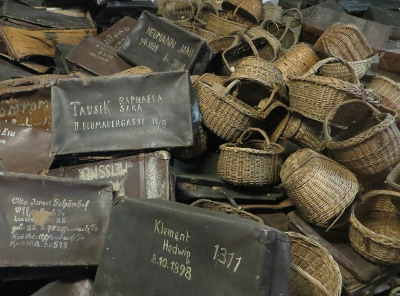
Another poignant exhibit features the Auschwitz shoes, an enormous collection of shoes taken from prisoners as they arrived at the camp. This morbid collection serves as a stark visual representation of the sheer number of victims of the Holocaust.
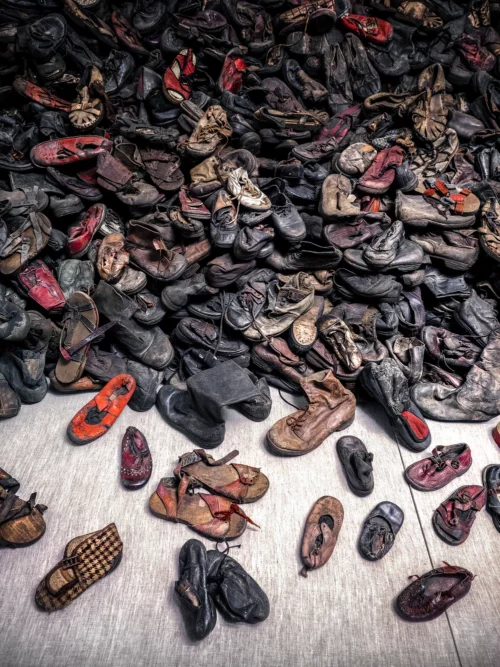
Overall, your visit to the Auschwitz Museum will leave an indelible impression, reminding you of the atrocities that were committed, the immense loss of life, and the importance of remembrance and education to ensure history does not repeat itself.
Prison Camp Profile
At Auschwitz, you will learn about its complex history as it functioned as three distinct camps: a prison camp, an extermination camp, and a slave-labour camp.
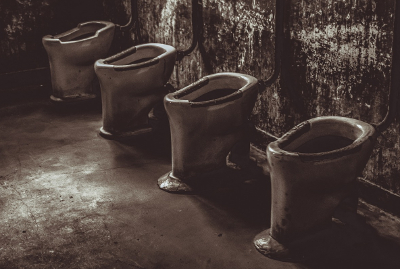
As a visitor, you will likely begin your visit at Auschwitz I, the prison camp. This part of the camp primarily held prisoners where they endured harsh conditions and inhumane treatment. You will see rows of brick buildings that were originally built to house Polish military personnel before the war but later repurposed to accommodate an increasing number of prisoners. These buildings, now converted into museum exhibits, offer a glimpse into the daily lives and struggles of the prisoners.

Touring the facilities, you will notice the Arbeit Macht Frei gate, which translates to “work sets you free”. This slogan, found at several concentration camps, falsely implied that prisoners could earn their freedom through hard work. In reality, inmates faced extreme forced labour, malnutrition, and mistreatment by the guards, contributing to the alarming mortality rate among prisoners.
At Auschwitz, it is important to remember that a significant number of children were also held captive. Although the majority of the prisoners were adult males, children found themselves subjected to inhumane conditions, including forced labour, medical experiments, and extermination.
Many of them perished as a result of the circumstances or were purposefully targeted by the Nazis because of their race, ethnicity, or disability.
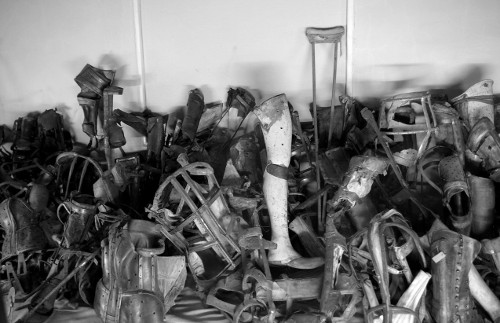
During your visit, you will also have an opportunity to explore Auschwitz II-Birkenau, the extermination camp. This part of the camp had vast gas chambers and crematoria designed to systematically kill large numbers of people, primarily Jews, as part of the Holocaust. The eerie remains of these structures serve as a stark reminder of the atrocities that occurred here.
The various buildings and sites within the Auschwitz complex provide a powerful insight into one of the darkest chapters of human history. As you navigate through them, gaining a greater understanding of the events that transpired, remember to approach this experience with respect and reflection for those who suffered and perished within its walls.
Historical Accounts
In the heart of Poland lies the harrowing site of Auschwitz, known as one of the most notorious concentration camps in human history. Between 1940 and 1945, during World War II, Nazis used this camp to imprison and exterminate over 1.1 million innocent people. As you delve into its historical accounts, you’ll uncover stories of tragedy, suffering, and unimaginable horror.
At Auschwitz, the majority of the victims were Jews, accounting for a significant portion of the six million Jews who perished during the Holocaust. However, the Nazis also targeted other groups, including Soviet prisoners of war, Polish resisters, gay people, and Roma populations. This systematic persecution resulted in one of the most extensive episodes of genocide in world history.

The establishment of Auschwitz was initially intended as a prison camp for Soviet prisoners of war and political enemies. Still, it later evolved into a death camp where extermination methods such as gas chambers and crematoria were installed to facilitate mass murder on an unprecedented scale. The camp was divided into three main sections: a prison camp, an extermination camp, and a slave-labour camp, each serving its own distinct purpose in the pursuit of the Nazi regime’s twisted ambitions.
Auschwitz’s liberation on 27th January 1945 by the Soviet Red Army marked a turning point in history and revealed the unspeakable horrors that had taken place. When Soviet troops arrived, they found only 7,000 prisoners still alive amidst the gruesome landscape of the camp. This day is now commemorated annually as International Holocaust Remembrance Day, a poignant reminder of the atrocities committed and the countless lives that were impacted forever.
As you explore these historical accounts of Auschwitz, remember that this dark chapter of history is not just a narrative of human suffering, but also a testament to the resilience of the human spirit. The accounts of the victims and survivors serve as a powerful reminder of our moral responsibility to ensure that such horrors are never repeated.
Auschwitz-Birkenau Memorial
Visiting the Auschwitz-Birkenau Memorial can be a deeply moving and educational experience. As you plan your visit, it’s important to be prepared and know what to expect when exploring this significant historical site.
The Auschwitz-Birkenau Memorial is dedicated to the victims of the Nazi concentration and extermination camps operating between 1940 and 1945. This sombre site includes various exhibits, preserved ruins, and poignant memorials. When visiting, you will have the opportunity to explore both the Auschwitz I and Auschwitz II-Birkenau camps.
Admission and guided tours
Entrance to the Auschwitz-Birkenau Memorial is free of charge, but it’s recommended that you reserve your entry card in advance on their website visit.auschwitz.org. To gain a better understanding of the history and significance of Auschwitz, consider engaging a guide-educator for a fee. These knowledgeable guides will accompany you throughout your visit, adding context and answering any questions you may have.
Duration of visit
Both the Auschwitz and Birkenau sites require a significant amount of time to explore properly. It is advisable to set aside a minimum of 90 minutes for each location, allowing yourself ample time to understand the exhibits and absorb the weight of the history that took place here.
Gas chambers
One of the most harrowing aspects of the Auschwitz-Birkenau Memorial is the presence of the gas chambers, where large numbers of innocent men, women, and children were killed in the Holocaust. The chambers have been preserved in their original state to serve as a stark reminder of the atrocities. It is essential to approach these areas with respect and reflection, remembering the countless lives lost.
In conclusion, when visiting the Auschwitz-Birkenau Memorial, it is crucial to remain respectful and sensitive to the site’s dark history and the people affected by it. By approaching your visit with an open mind and a willingness to learn, you can gain a deeper understanding of this tragic period in human history.
Frequently Asked Questions
What should I wear when visiting Auschwitz?
When visiting Auschwitz, it is essential to dress respectfully and appropriately for the solemnity of the site. Wear comfortable clothes and shoes suitable for walking, as you will be spending time exploring the grounds. A
dditionally, the weather can vary, so it’s important to dress for the season and bring layers for unpredictable conditions.
How do I book tickets for an Auschwitz tour?
To book tickets for an Auschwitz tour, you can visit the Auschwitz-Birkenau Museum’s official website.
There, you’ll find information on available tours, ticket prices, and booking options. It is recommended to book your tickets in advance to ensure a smooth visit and the availability of the tour you prefer.
Is it possible to visit Auschwitz without a guide?
Yes, it is possible to visit Auschwitz without a guide. However, visitors are encouraged to take guided tours to gain a deeper understanding of the events that occurred there. There are several options for private Auschwitz tours if you would like a more personalised experience.
What is the recommended duration for an Auschwitz tour?
The recommended duration for an Auschwitz tour is about 90 minutes for the Auschwitz I site and another 90 minutes for Auschwitz II-Birkenau. This allows ample time to explore the grounds and exhibitions to fully appreciate and understand the history of the site. Therefore, allocate around 3 hours for a complete visit.
What are the most convenient accommodation options near Auschwitz?
There are several accommodation options near Auschwitz, including hotels, hostels, and guesthouses.
Some are within walking distance of the museum, while others are a short drive away. Depending on your budget and preferences, you can find suitable lodging for your visit. Researching online for nearby accommodation options is a good starting point.
Are there any specific rules or etiquettes to follow while visiting Auschwitz?
Visiting Auschwitz requires a respectful and solemn approach. There are certain rules and etiquettes to follow while on site. These include maintaining silence in certain areas, not taking photographs in designated places, and being mindful of others around you. Additionally, it is essential to comply with the opening hours of the Auschwitz-Birkenau Museum to ensure that the site is accessible and respectful of its historical significance.










